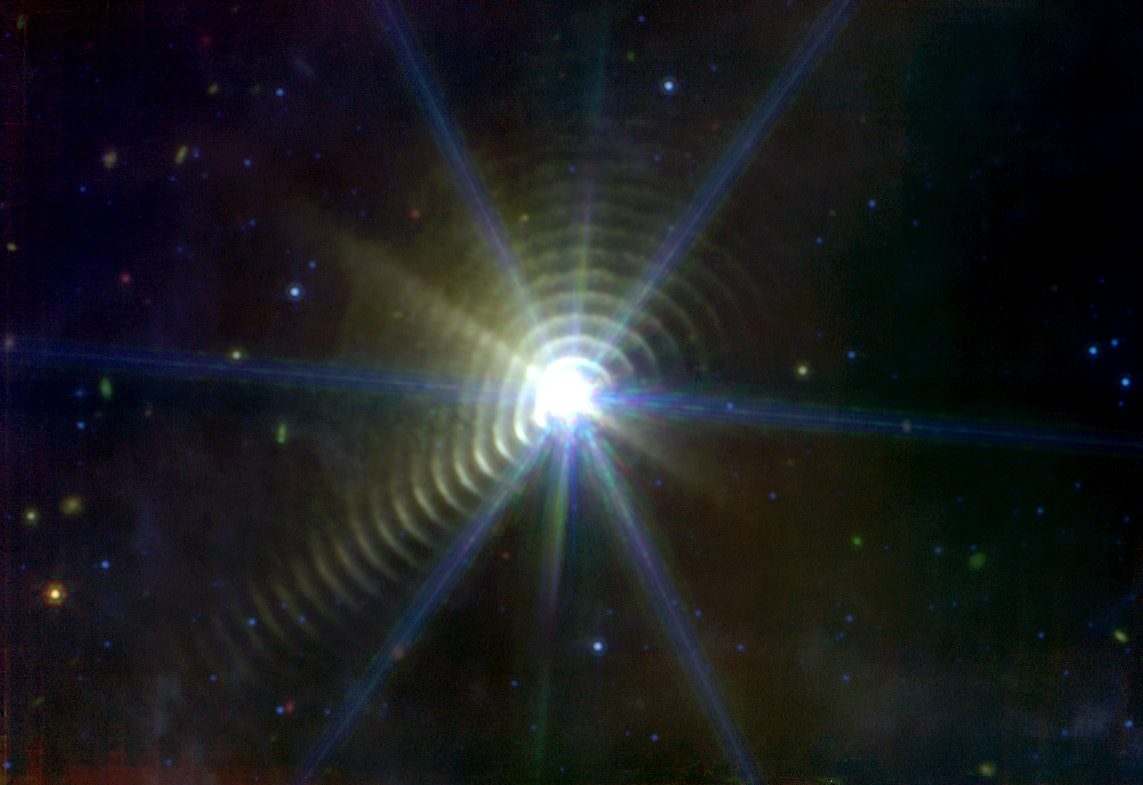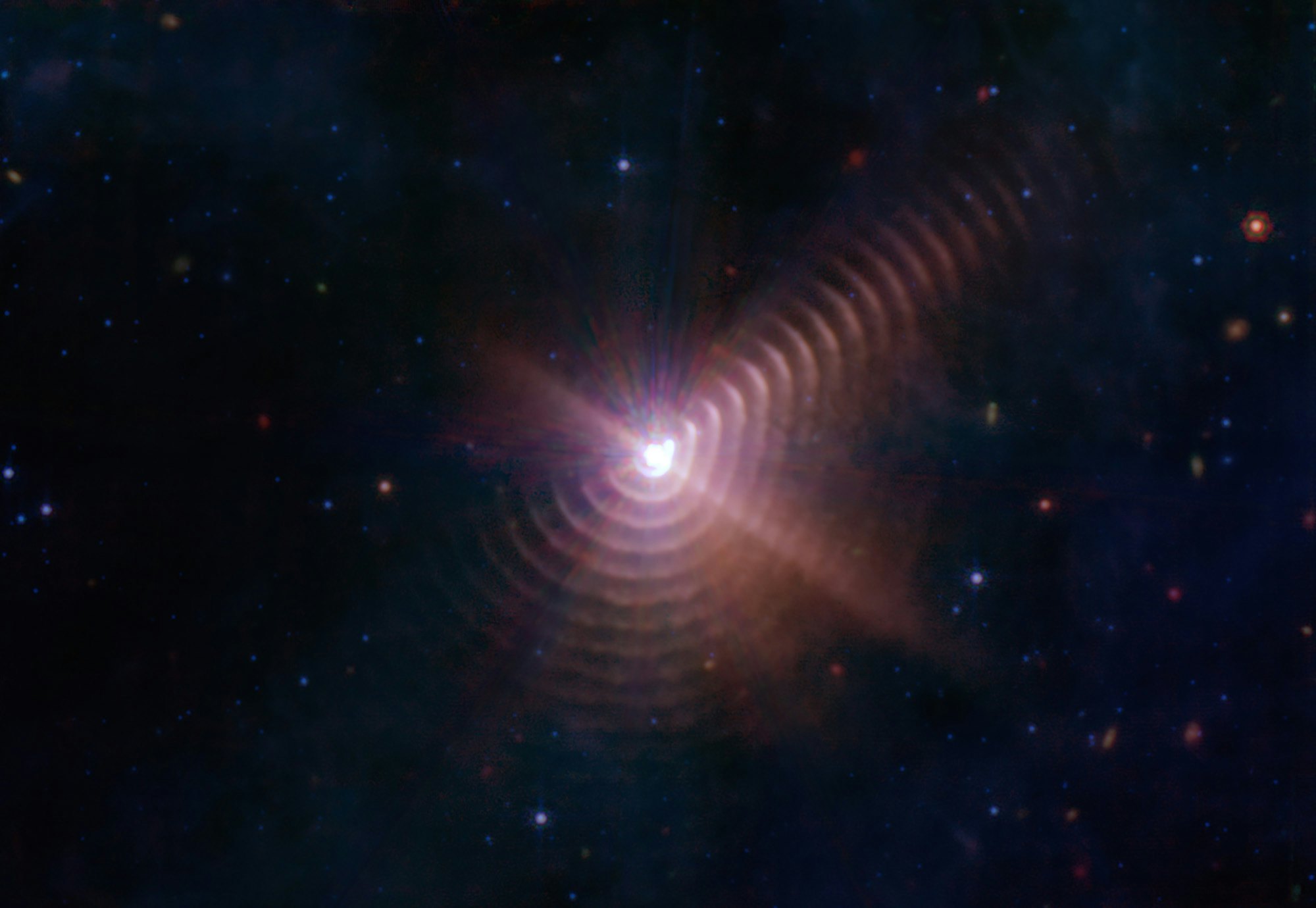
At first, astronomer Ryan Lau thought there must be some mistake. A lead scientist on the Webb Telescope’s Early Release Science program, Lau had spotted a pattern in the light around a binary star system he thought so remarkable it had to be a trick of the light. Seventeen rings formed concentric haloes around the star system, like luminous ripples emanating from its central light.
But what Lau saw in his observations was no optical illusion but the after-effects of a cosmic dance between the two stars that compose Wolf-Rayet (WR) 140, the binary star system at the center of the observations.
What’s new — In a fresh image released by the Webb Telescope team on October 12, one can see the strangely perfect light rings around WR 140 emanating into the darkness of deep space.

Previous observations suggested two rings of dust around WR 140 — debris shed as the two stars in the system came closest to one another in their orbital dance. But now, the Webb Telescope image, produced with data from the MIRI instrument, reveals at least 17 rings around the system, representing more than 130 years of its history in the form of dust and light, Lau says in a statement — almost like the rings on a tree can reveal its age.
“I was amazed. Although they resemble rings in the image, the true 3D geometry of those semi-circular features is better described as a shell,” he explains.
“The shells of dust are formed each time the stars reach a point in their orbit where they are closest to each other and their stellar winds interact. The even spacing between the shells indicates that dust formation events are occurring like clockwork, once in each eight-year orbit,” he adds.
The observations are stunning, but the team went further, using the data gathered to perform spectroscopy — an analysis of the chemical signatures in the light from WR 140 and its rings — to find out more about their composition and their interactions with the interstellar medium, which is the space between stars.
“The survival of these distant shells shows that the dust formed by WR binaries like WR 140 will likely survive to enrich the surrounding interstellar environment,” Lau explains.
Why it matters — The Webb Telescope is proving its worth once more. Ground-based telescopes had observed two dust rings around WR 140, but the Webb can see 17 — some of which are “over 70,000 times the distance from Earth to the Sun,” Lau says. These dust shells are also being propelled out into space at incredible speeds — about 6 million miles an hour — amid a hot, chaotic environment. These are not ideal observing conditions, but Webb did the job.
WR 140 is among the only binary star pairs of this kind that astronomers know of to exhibit shells like this. Other very hot and bright binaries like WR 140 tend to emanate dust in a constant stream rather than in a shell effect.
But one of the most intriguing findings is not the rings themselves, so much as the elements that lurk within them. An outstanding question for astronomers is where do planets and stars get their building blocks from in the cosmos. These observations could help reveal at least part of the answer.
“The dust was composed of compounds consistent with Polycyclic Aromatic Hydrocarbons. This carbonaceous material plays an important role in the interstellar medium and the formation of stars and planets, but its origin is a long-standing mystery,” Lau says.
“With the combined results of JWST’s MRS spectra and MIRI imaging, we now have evidence that WR binaries can be an important source of carbon-rich compounds that enrich the interstellar environment of our galaxy and likely galaxies beyond our own.”
What’s next — The team has already checked their observations against a model suggesting dust shells form in binaries such as this one, which helps verify the findings, which were published in Nature on October 12. In the paper, the researchers highlight a kind of “Goldilocks” condition in WR binaries that is most ripe for dust production — a finding which could help unlock more secrets about these bright binary pairs elsewhere in the universe.
Understanding star pairs like WR 140 can help us understand our own origin story. It is possible that the Sun around which our planet orbits was created from the dust and debris left by a Wolf-Rayet binary.
Patrick Morris, an astrophysicist and co-author of the new study, says in a statement that “I think with NASA’s new space telescope, we’re going to learn a lot more about how these stars shape the material between stars and trigger new star formation in galaxies.”







